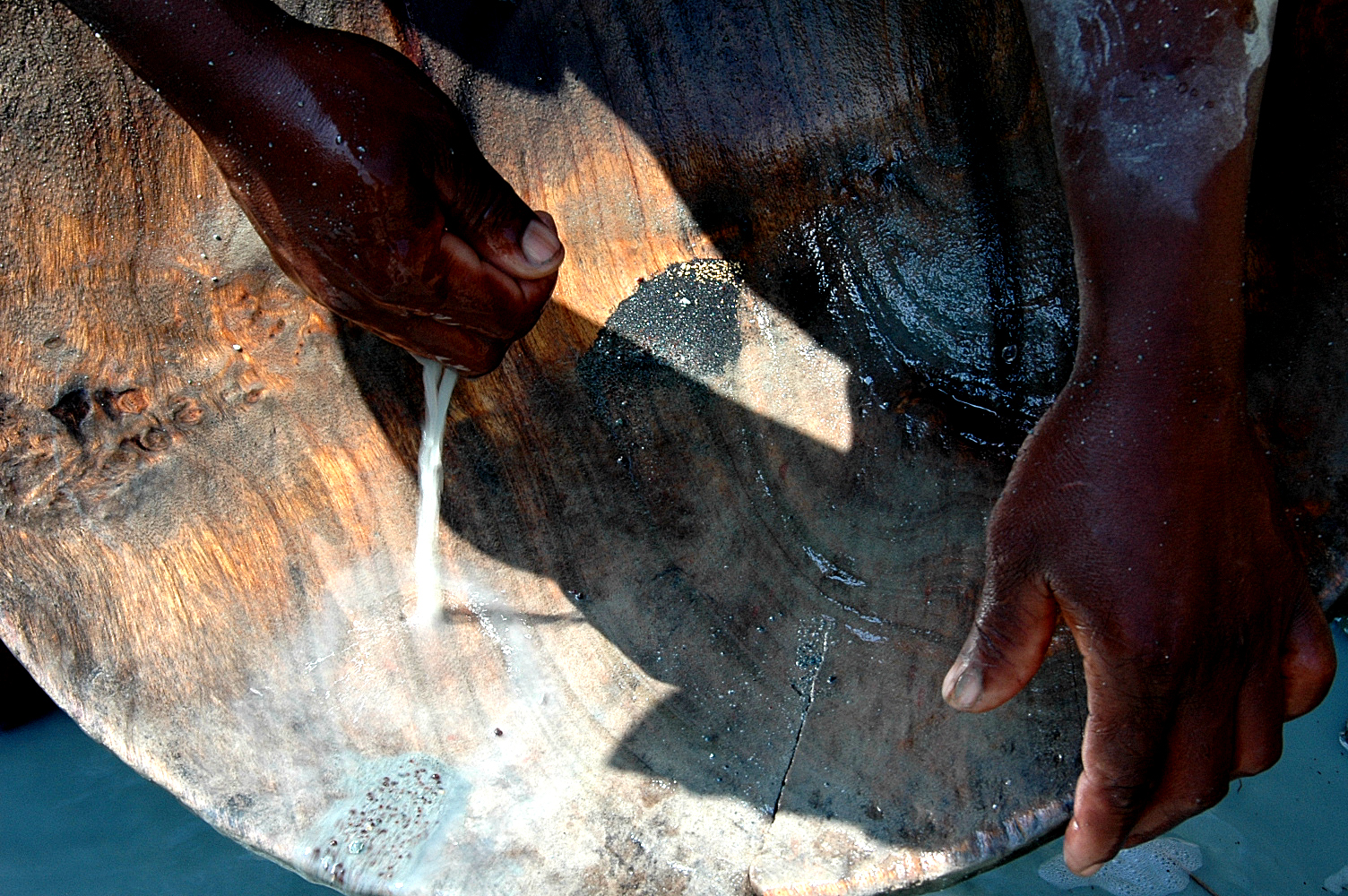
Atop hills that tumble into green valleys sits La Toma, an Afro-Colombian community of 1,300 families. Their ancestors were slaves who settled here in 1637 to mine the gold found in the hillsides, and today the miners' descendants continue to chip away at the rock in search of flecks of gold. In fact, 85 percent of La Toma relies on this small-scale form of gold mining they have practiced for centuries.
But their livelihoods are now under threat. La Toma is in the cross-hairs of a struggle playing out in rural communities across Colombia, the result of a national mining boom that pits small-scale miners against big mining interests.
Between 2002 and 2010, Colombia's government gave out 7,500 mining exploration titles to Colombian and foreign nationals and mining companies. But many of these concessions overlap in areas where communities have practiced small- and medium-scale mining for generations. Like hundreds of communities across the country, La Toma faces the threat of its livelihood being displaced by industrial mining.
On a recent morning, Carlino Ararat, a miner for most of his life, takes me to one of the mines near La Toma to show me what the community is at risk of losing. He swiftly yet carefully navigates the rock and mud of the same steep path he has scrambled down for the last 25 years. The path leads to a terraced mountainside where 30 or so families have carved away flat patches of the slope encircled by sacks of rock. Carlino turns on his headlamp, grabs a twisted metal rod with a sharp point at its end, and heads into a tunnel that La Toma's families have chipped away at for 30 years now. At a depth of 450 meters, where Carlino shares a patch of rock wall with his neighbors, oxygen is low and breathing is difficult.
Once he picks away enough rock pieces to fill several sacks, he and his sons haul them out of the tunnel and empty them out on the family's hillside parcel of land the size of a garden shed. His wife and sons then use a heavy metal pole to smash the rock into smaller pieces. They swirl the ground rock with water in a batea, a wooden plate, siftng for specks of gold that fall to the bottom. Then they do it all over again.
The thought of not being able to do this back-breaking and poorly-paid work brings not relief, but trepidation to these families. "We like this work because it's what we have. There is no other work to do here. So we have to be able to continue doing this," Carlino told me.
In trying to prevent the incursion of mining companies that have obtained exploration titles to the land around La Toma, the community has put up a sustained fight to protect not only its livelihood, but also an integral part of its culture. The struggle is taking place within a climate of threats and violence that many here see as linked to the big mining interests. Community leaders and miners from La Toma and the surrounding area have been assassinated and the community council has received death threats via cell phone text messages and fax, sometimes signed by a paramilitary group called the Aguilas Negras, black eagles. But often, it's hard to know if the violence and threats are directly related to mining conflicts. The region is afflicted by high levels of violence, and both guerrilla and paramilitary groups are active.
Eduar Mina Lopez, the community council president says he thinks the mining companies are responsible. "We didn't have problems before the mining companies came," he told me one evening sitting in front of his house at the foot of a hill outside of La Toma. "It's a great coincidence that the threats and deaths started at the same time."
One of the holders of a mining concession in La Toma, a Colombian national named Hector Jesús Sarría, filed for an administrative injunction that obliges the municipal mayor of Suarez (to which La Toma belongs) to remove the traditional miners from his concession. This has put mayors across Colombia in an impossible situation of going against their electorate. Suarez's mayor, Luis Fernando Colorado, didn't want to carry out the order to displace La Toma's miners and managed to continually delay plans for police to execute the order. As a result, he's facing charges of failing to fulfill his lawful duties.
A separate legal proceeding has so far saved him—and La Toma. Afro-descendants and indigenous communities have the right to be consulted prior to infrastructure and resource extraction projects. But La Toma was never consulted before mining titles were granted, and so decided to take the matter to Colombia's Constitutional Court. In April 2011, the court made a decision to suspend all further mining titles in La Toma—requiring that Sarría, and other mining title holders carry out "adequate consultation" before proceeding with further mining plans.
The decision is a victory for La Toma, but only time will tell if it will be effective in halting outside mining interests. It has also given reprieve to Colorado, Suarez's mayor. The lawsuit against him has been shelved for now. "If it wasn't for that decision," he told me, "I would've been arrested by now and put in jail for serving the interests of my people."



